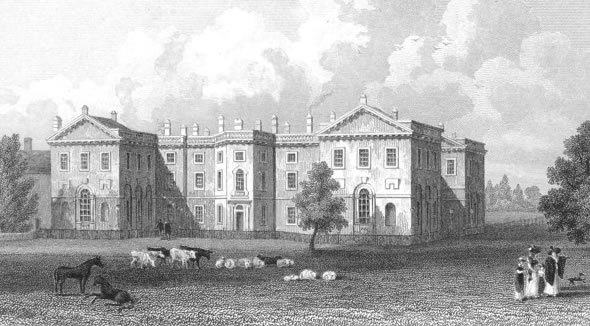Nottingham-based author, Mark Patterson, is to be commended for making recent archaeological research on Roman Nottinghamshire available "in accessible narrative form." Motivated by a desire to correct the widely-held view that the county is a black-spot for Roman archaeology, Mark has trawled through academic journals, talked to professionals and experts and visited the sites to produce a readable and comprehensive synthesis of the latest thinking on this 400 year period of Nottinghamshire history.
The book covers the standard themes of pre-Roman tribal society, Romano-British religion and culture, military sites, villas and roads. The author also devotes space to every major Roman site in the county and summarises past and present discussions about their development; from the 17th/18th century fantasies of the antiquarians to the more scientifically based conclusions of modern archaeologists. The roadside settlement of Margidunum on the Fosse Way near Bingham is given the most attention and Patterson challenges some of the conclusions drawn by Felix Oswald who excavated it in the 1930s. I was, however, sometimes surprised by the order of the sections, particularly the one on post-Roman Nottinghamshire which appears at the end of the 'life's essentials' chapter after a discussion on diet and food!
The book is well illustrated but would be improved by the addition of detailed maps showing the distribution of villas, forts and roads in Nottinghamshire and the surrounding area: the two maps that are included depict some of the information but they don't show the full picture.
Minor criticisms aside, it remains a very useful and eminently readable summary of the latest research on the Roman archaeology of Nottinghamshire and is highly recommended.
31 May 2011
30 May 2011
Laxton Heritage Day, 3 July 2011
The heritage day is being held at Crosshill Farm on July 3rd to celebrate "the amazing story of Laxton and how it came to be the last open field farming village in the country where strip farming is still practised, the manorial system still operates and the farmers are bound by the rules of the Court Leet."
Events on the day include:
- Guided tours of the Open Fields , the church and the motte & bailey castle
- Talks by Professor John Beckett, the authority on the history of Laxton
- Display by Laxton History Group featuring many items not normally on view to the public and incorporating Newark & Sherwood Museums Service and Tuxford Windmill
- Heritage films and photos
- Vintage tractor and horse ploughing
- Craft demonstrations and information stands
- Morris dancing from Rattlejag Morris of Retford – the people who dance in the May at Laxton castle
- Notts Wildlife trust
- Medieval Lives demonstration
- Refreshments, sandwiches, cakes, bar
- Raffle and lots more
15 May 2011
Transactions of the Thoroton Society, Volume 114 (2010)
The latest Transactions of the county historical society has just been published. Contents include:
- Cranbrook House, Cranbrook Street, Nottingham: An Archaeological Excavation Revisited by Scott Lomax
- Tree-Ring Dating and the Historical and Social Context of Timber-Frame Buildings, Norwell, Nottinghamshire by Matthew Hurford, Michael Jones and Cathy Tyers
- Ergotism? A Seventeenth Century Demographic Crisis in Bassetlaw by Jean Nicholson and Hannah Nicholson
- The North Nottinghamshire Coal Trade in the Eighteenth Century by Philip Riden
- The Nottinghamshire History Lecture 2010. Harmony and Good Company: The Choir-Band as a Vehicle of Sociability in Nottinghamshire, c.1750-1830 by Katie Holland
- The Library World of Nottinghamshire in the Eighteenth and Early Nineteenth Century by Peter Hoare
- Burgage Manor: New Perspectives on Georgian Southwell by Stanley Chapman
- Byron at Burgage Manor, 1803-08 by Geoffrey Bond
- Cheering the Member: Gladstone Election Songs at Newark by Richard A Gaunt
- The Clergyman, The Widow, and The Milkman: An Examination into the Landlords of Working Class Housing in Edwardian Nottingham by Maureen Cooper
- Archaeology in Nottinghamshire 2010 edited by Keith Challis
"East Retford and the Dukeries"
The latest addition to my Nottinghamshire History website is "East Retford and the Dukeries", a guide to the town and the surrounding area dating from 1908. I was delighted to find the book at Ken Spelman's bookshop in York a couple of months ago and particularly enjoyed looking at the adverts: many of the names (e.g. Northern Rubber, Jenkins, Bamforth, Curtis) are familiar from when I lived in Retford during the 1970s.
14 May 2011
Graffiti at the site of the Southwell Roman villa
On a recent visit to Southwell I was amused to see that not only do the locals write graffiti in Latin but that fellow citizens helpfully correct their grammar! What an educated place....
Fading Faces exhibition at the Central Library in Nottingham
The Fading Faces Project is recording gargoyles, grotesques & reliefs in Nottinghamshire. The aim is to "document, archive and record these stone sentinels of history in anyway possible before they disappear completely."
A photographic exhibition showing examples of Nottinghamshire gargoyles is running throughout May at Nottingham Central Library.
A photographic exhibition showing examples of Nottinghamshire gargoyles is running throughout May at Nottingham Central Library.
Subscribe to:
Posts (Atom)





